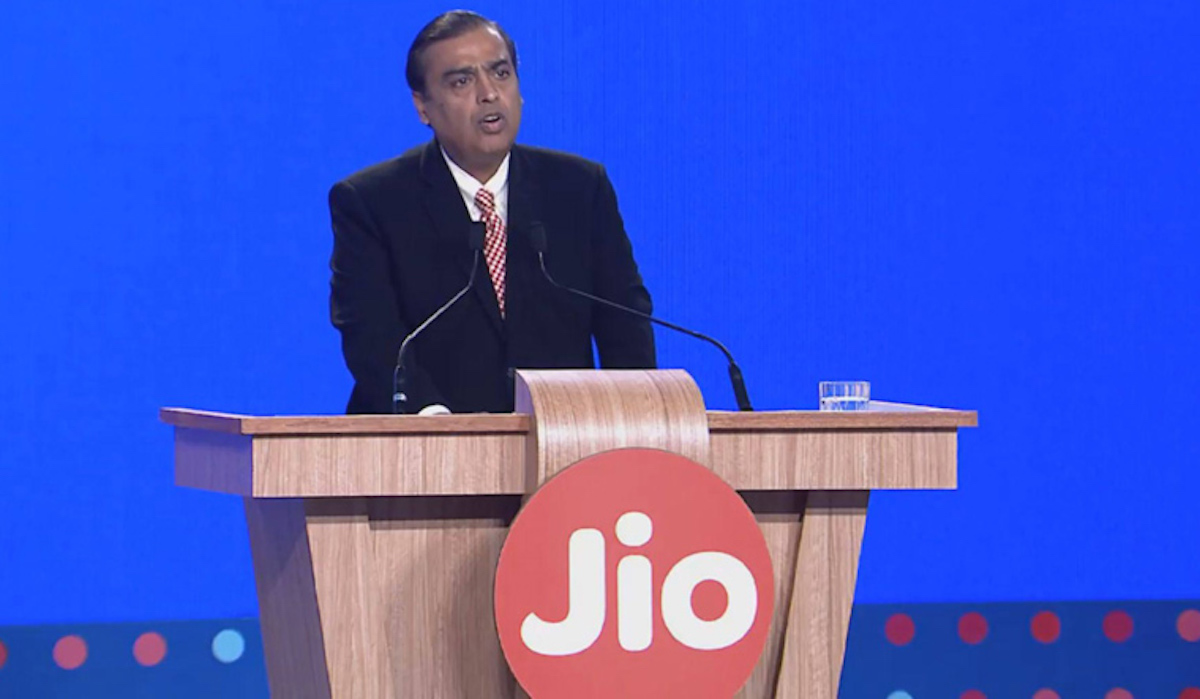With $28 billion he’s raised working from home, India’s richest man wants to step into the breach created by the technology cold war between America and China. The two Silicon Valley tech giants that gave him a third of the money will help put him there.
It’s an audacious plan. Politicians in many nations, including the US, the UK and India, are reluctant to let Huawei Technologies Co., which they accuse of being an instrument of the Chinese State, become embedded in the fast speed internet networks that will run everything from power stations to autonomous cars.
Ambani’s four-year-old Jio Platforms Ltd. has indigenously built its own 5G technology, the tycoon announced at Wednesday’s annual general meeting of his flagship Reliance Industries Ltd.
After testing it on the 400 million 4G customers he has in the country, he’ll offer it to other markets. The news18.com website, also controlled by Ambani, called the technology “Huawei-killer”, and noted that US Secretary of State Mike Pompeo had praised Jio as a clean network for not using the Chinese firm’s gear.
While details of Ambani’s 5G prowess and the market he hopes to target are still fuzzy, the planned assault against handset makers is clear.
Alphabet Inc. CEO made a virtual appearance at the Reliance AGM and pledged $4.5 billion for a 7.7% stake in Jio and a chance to build an Android operating system. The cheap smart phones running it will migrate 350 million Indians who still use feature phones to mobile internet. But how much customization will Google be comfortable with? If it’s a lot, the phone may be affordable but tied to Jio’s apps. Too little, and the pricing may be unattractive. Somewhere between those extremes, it’s a threat to Xiaomi Corp. As Bloomberg Intelligence analyst Anthea Lai notes, India accounted for 35% of the Chinese vendor’s smartphone shipments last year.
One more thing is now evident: WhatsApp, the messaging system of Facebook Inc., which has given Jio $5.7 billion for a near-10% stake, will drive commerce. The blueprint is again Chinese. WhatsApp’s popularity, and its ability to handle payments in real time, make it a perfect platform for Ambani to build a super-app like Tencent Holdings Ltd.’s WeChat, connecting brands with customers.
The 3,00,000 Reliance investors who watched the AGM on JioMeet, Ambani’s cloud-conferencing clone of Zoom Video Communications Inc., probably found the sharp pivot away from hydrocarbons a bit too much to take. Ambani dropped enough hints that last year’s plan to sell 20% of his mainstay oils-to-chemicals business to Saudi Aramco was now unlikely.
Given the Wuhan virus situation, writing a $15 billion check would be a further strain on Aramco’s $7.5 billion- a-year dividend payout. Still, Reliance shares fell 3.8% after Ambani said the unit will be spun off and seek new investors.
Reliance may get saddled with a permanent discount as a holding company of digital, retail and hydrocarbon assets, but the empire could easily command a premium as India’s undeclared national champion.
Just as Ambani wants to emulate several successful Chinese firms at once, the country’s policy makers want the same thing for the broader economy: make India the world’s factory, by lodging it into the growing chasm between the West and China. But neither the physical infrastructure, nor most of India Inc.’s balance sheet, is ready. Not to mention the cumbersome laws and the corrupt bureaucracy. After the pandemic, everything from a broken financial sector to grossly inadequate worker housing, healthcare and social security will compete for fiscal sops from a government trying to retain its tenuous investment-grade rating.
Reliance’s capital-raising spree has made it free of net debt. It’s willing to run with Prime Minister Narendra Modi’s buy-Indian agenda. Its grocery business would lift farmer incomes by direct purchasing. Jio’s cheap cloud services for small businesses would help them digitize. By connecting to JioMart, a virtual store, neighbourhood (kirana) shops could outgrow there limited shelf space, Ambani said. JioMeet could become virtual classroom to the country. Reliance also wants to supply cleaner auto fuels to end Indian cities crippling pollution problem.
As India learned from China, economic policy that aligns itself with the expansion of a few large capitalists is more manageable – and produces faster results – than one that has to play referee to free and open competition. By the time that throws up a winner, Vietnam and Bangladesh might corner the export opportunity that India wants to claim.
India’s competitive landscape would have been broadened had Google’s Pichai bought a stake in Jio telecom competitor Vodafone Idea Ltd., a plan it was considering, according to a Financial Times report in May. Although that deal is probably now dead, Pichai might still pitch his own tent separately from Ambani’s. So far, he’s only decided on the handset partnership with Jio. There’s still plenty left in the $10 billion kitty he set aside for India earlier this week.
There’s also Amazon.com Inc.’s Jeff Bezos. It will be surprising if, after committing $5.5 billion to the country, he bows out. As for Ambani, he still has to demonstrate that one company can be India’s answer to everything, from Zoom and Tencent to Huawei and Xiaomi, while also being a large telco like Verizon Communications Inc.

